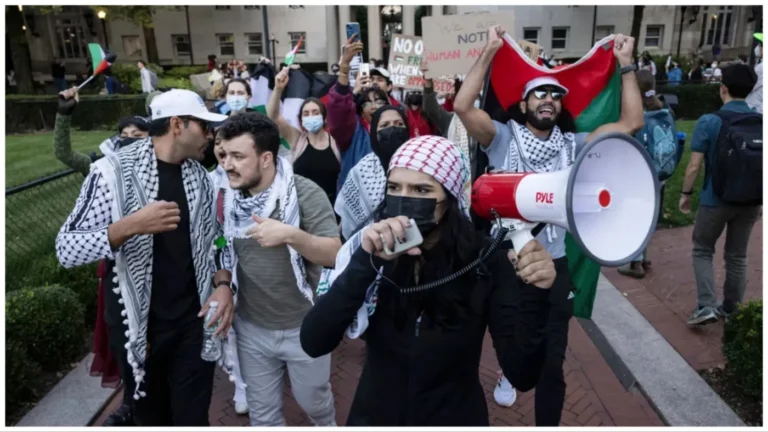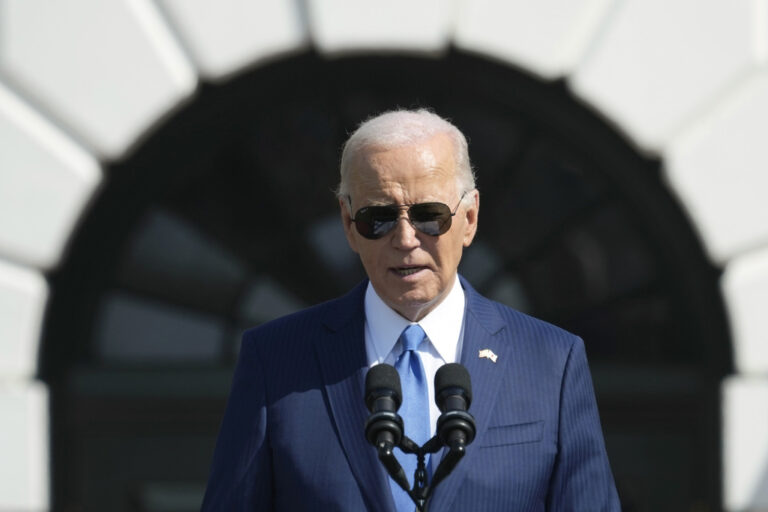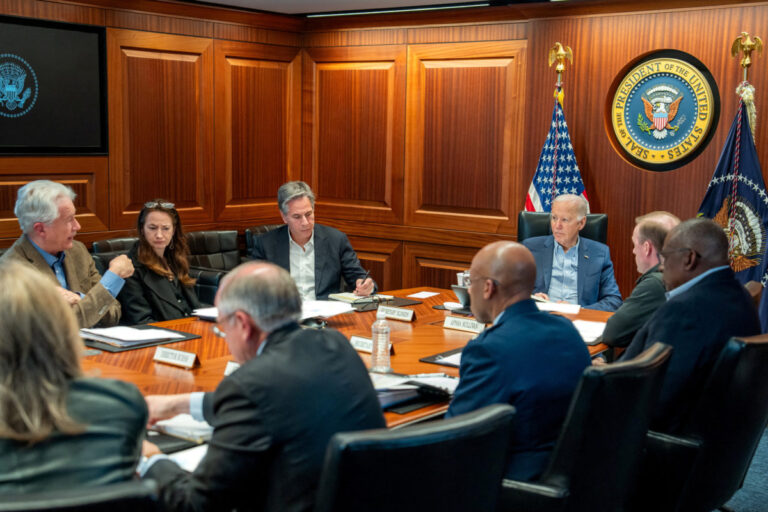 Despite increasing scrutiny from the press and a bipartisan shift away from tough-on-crime policies, America’s police still have an ally in the Oval Office.
Despite increasing scrutiny from the press and a bipartisan shift away from tough-on-crime policies, America’s police still have an ally in the Oval Office.
President Obama has long had nice words for law enforcement in his speeches, even as he has addressed cases of alleged police brutality and called for reforms to the criminal-justice system. “Murderers, predators, rapists, gang leaders, drug kingpins — we need some of those folks behind bars,” Obama said to applause at the NAACP’s national conference in Philadelphia last year. “Our communities are safer, thanks to brave police officers and hard-working prosecutors who put those violent criminals in jail.”
It isn’t just rhetoric, as the White House made clear in a report last week. Obama’s economic advisers believe that hiring tens of thousands of additional police officers could have real benefits for society in general, preventing as many as 1.5 million crimes annually.
The report from the Council of Economic Advisers — which is charged with providing the president with research and guidance on economic questions — reveals the differences of opinion between the Obama administration and the many activists who feel that police often do more harm than good.
Obama’s advisers cite extensive research showing that more officers do prevent crime, but criminologists are warning that the data needs to be interpreted with care. Police manpower is one thing. Figuring out how to use it efficiently and strategically, to reduce crime over the long term, is an entirely different question — one that many experts say hasn’t been answered conclusively.
Obama’s advisers, for instance, point out that the United States has about 35 percent fewer police officers than average, compared with the rest of the world and adjusting for the size of the population. They also cite research showing that the presence of police can prevent crime by making potential criminals feel they’re more likely to be apprehended — which is a far more effective deterrent than a lengthy sentence if the offender doesn’t expect to get caught anyway.
Researchers have studied the controversial crime-policy bill that President Bill Clinton signed in 1994 and that he promised would provide the funding to put an additional 100,000 police officers on the street. Economists William Evans and Emily Owens concluded those officers significantly reduced the numbers of motor-vehicle thefts, robberies, burglaries and aggravated assaults in the cities where they were hired.
These officers were especially effective in policing neighborhoods where crime had become rampant, said Franklin Zimring, a criminologist at the University of California at Berkeley.
In particular, police closed down the public drug markets that were common until recently in cities such as New York, Baltimore and Seattle. Disrupting those markets required sustained vigilance — and manpower, Zimring said. He added that while this strategy didn’t necessarily reduce sales of drugs (since many sellers moved indoors, where they relied on technology to connect with customers), it did prevent dealers from feuding violently with each other over control of public places.
“If you and I are selling drugs on the street, we’re both going to want the best corner, and if we have a conflict about who got there first, we’re not going to put it into arbitration,” Zimring said. “They put a tremendous number of cops in to destroy the public drug markets.”
Based on this evidence, Obama’s advisers argue that a major investment in hiring more police officers would prevent between 440,000 and 1.5 million crimes a year nationally, yielding as much as $38 billion in economic benefits on a hypothetical investment of $10 billion. In contrast, they concluded, spending an additional $10 billion on incarceration would probably do little to deter crime.
Peter Orszag, the former head of Obama’s Office of Management and Budget, argued at a conference at the White House last week that more police would deter crimes for which most offenders are never caught.
There is “a positive return to police presence,” he said, citing figures showing that police make arrests in roughly 1 in 7 burglaries.
“That unfortunately encourages burglaries in a way that prison sentences don’t do much to offset,” Orszag said.
According to some analysts, however, it is worth noting that it is unclear whether crime was reduced because police were exercising the power of law enforcement or for some other reason.
Accounting for the cost of equipment and training, a police department with money to spare might be better off hiring civilian analysts at headquarters rather than putting more sworn officers on the street, said Jim Bueermann, formerly the chief of police in Redlands, Calif.
He said that a vest and a gun for a police officer can cost $1,000 each. A portable radio can cost several thousand more. Then there is the cost of purchasing and maintaining vehicles so officers can get where they’re needed. All told, salary and equipment for a sworn officer can total $150,000 annually, according to Bueermann. At that price, a couple of well-paid analysts with decent software might do more to help the existing police force prevent crime by exploiting the department’s data on crime. This is an argument against the cost-efficiency of the investment but not the efficacy of it.
“The number of officers per capita is much less important than how you use the police officers that you have,” said Bueermann, who is now the president of the Police Foundation, a research group in Washington.
Alternatively, experts say, police could rely on volunteers or other civilian leaders in the community.
Sometimes the police need to chase offenders down and put them in handcuffs. At other times, all they need to do is to keep their eyes on the street. As representatives of the community’s values and potential witnesses in a court of law, their presence alone is enough to deter crime — and that can be true of almost anyone.
Just by bringing people together in public, even community gardens and business improvement districts — the informal associations that businesses establish in commercial districts across the country to attract customers and keep the streets clean — have been shown to reduce crime, noted Patrick Sharkey, a sociologist at New York University.
He also said, however, that not all of the police’s functions can be replaced by members of the community.
“The challenges of policing that have become so visible over the past couple years have kind of led to this sense that policing itself is problematic, that the presence of police officers in low-income communities of color is something that is harmful or negative,” Sharkey said. “Police are as crucial to maintaining public safety and maintaining stable communities as they’ve always been.”
Finally, most of the research on policing and crime is still just a few years old, and it is impossible to know what the consequences of putting more officers on the street will be over the long term.
Sharkey’s research suggests that children who grow up poor in cities with less violent crime are more likely to get ahead in life, while those who grow up in violent places are more likely to remain poor as adults. Yet when he and his colleagues adjusted for other differences between communities, it wasn’t clear whether the size of the police force had any effect on economic mobility.
If police are too numerous, their presence might antagonize the public, argued Phillip Atiba Goff, a psychologist at the University of California at Los Angeles. Over the long term, a larger force could erode the police’s ability to solve cases by making it more difficult for them to win the cooperation of witnesses and potential informants. In the short term, a larger force could give the appearance of a decline in crime without actually improving public safety, simply because fewer people are calling the police when crimes are committed.
“Where there is a heavy police presence, there tends to be less trust,” Goff said. “By arresting more people, or by having more cops on the street — that kind of system may ironically produce more criminals.”
Obama’s advisers state their conclusions cautiously in the report from the White House. They write that an emphasis on public trust and civilians’ rights should be a condition of any more spending for police manpower. The authors of the report also consider a broad range of other policies, outside of policing, for reducing crime, such as investments in early-childhood education and eliminating legal barriers to housing and employment for offenders after they’ve served their time.
Nonetheless, the report’s endorsement of a larger police force irked some readers.
“At this moment, I just think it’s tone-deaf to say we need more cops,” said Paul Butler, a legal scholar at Georgetown University who has been critical of some of Obama’s stances on policing.
“The recommendation to increase the number of police is blind to history, and it’s blind to the present moment,” Butler said.
(c) 2016, The Washington Post · Max Ehrenfreund





